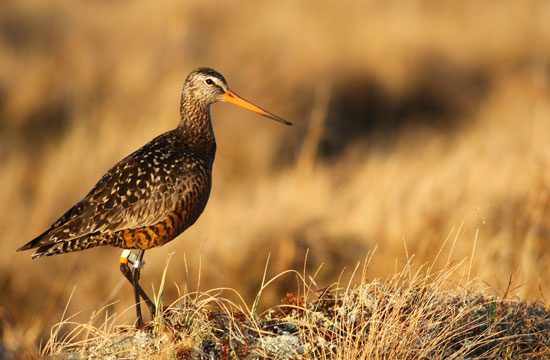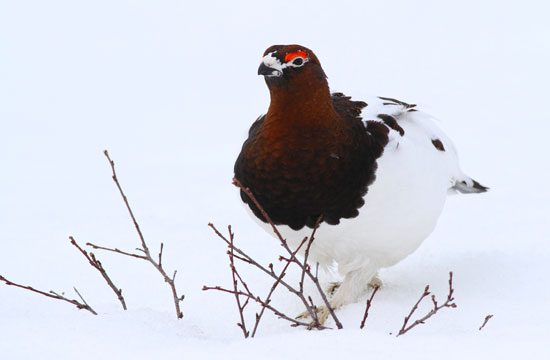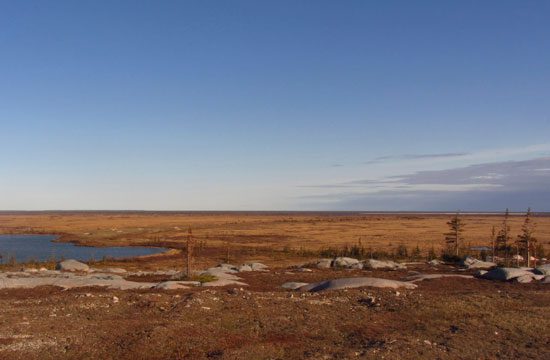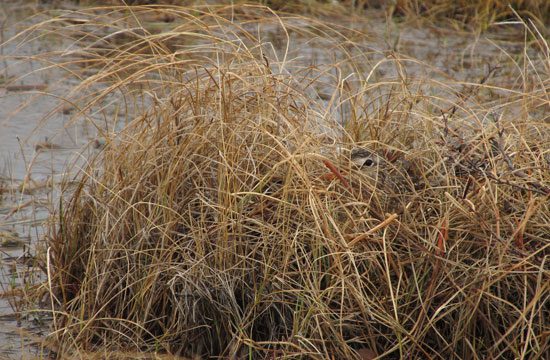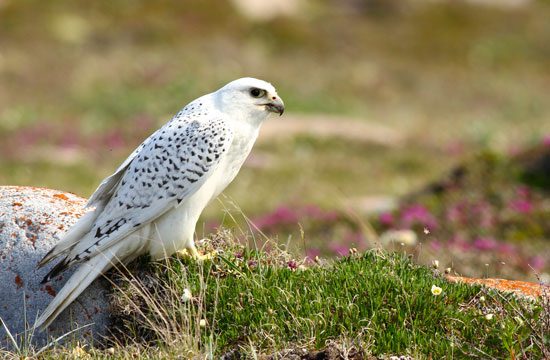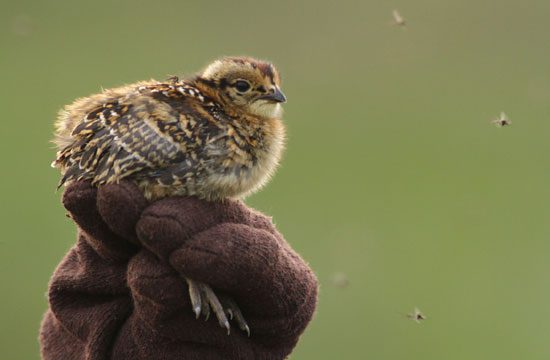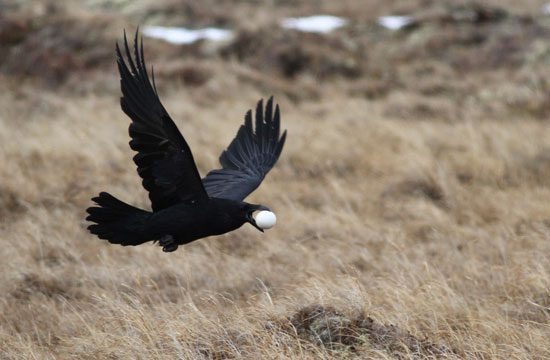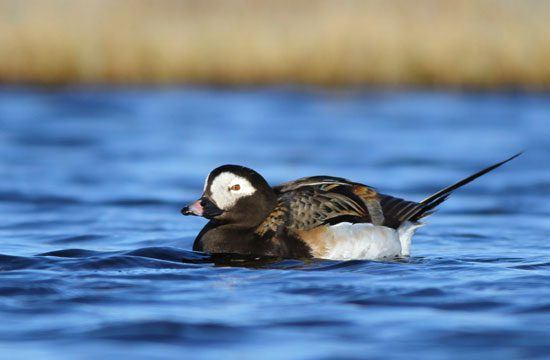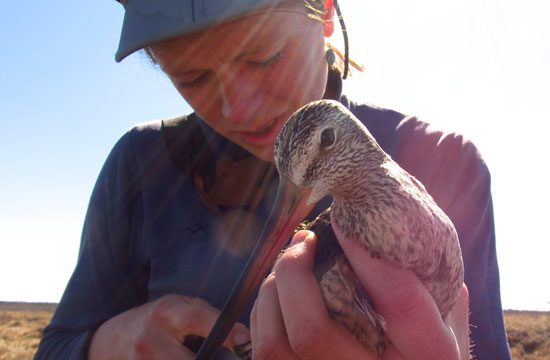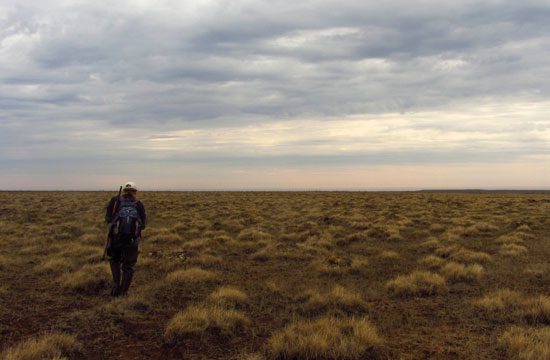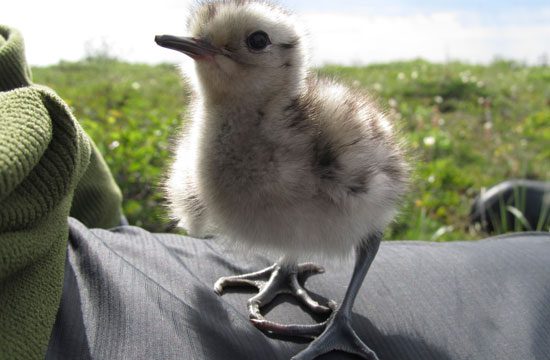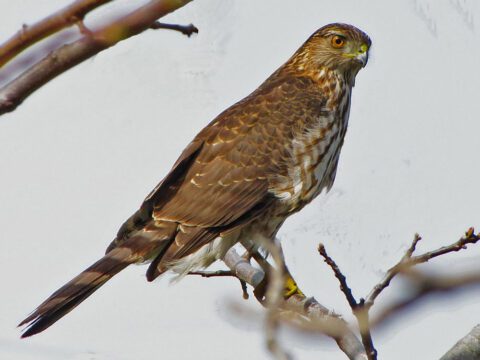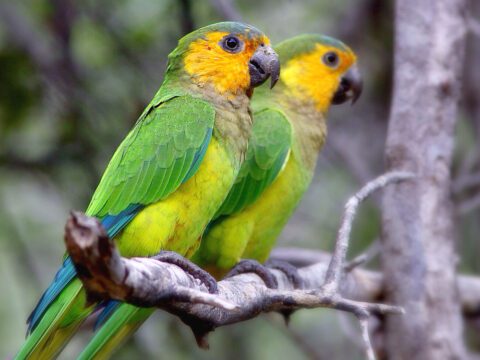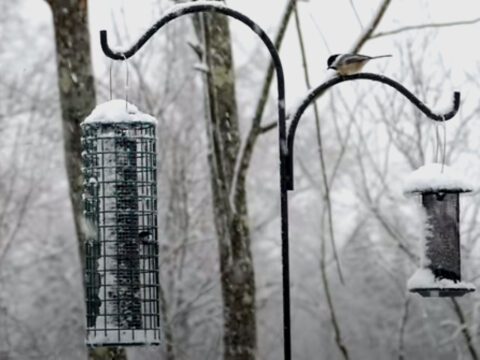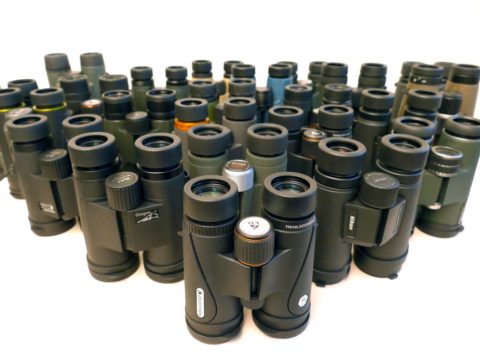Fen-filled summer: godwits, Gyrfalcons, and fuzzy shorebird chicks [slideshow]
Text and photos by Andy Johnson August 5, 2011
Andy is helping grad student Nate Senner study migrations of Hudsonian Godwits 
A male Willow Ptarmigan's plumage straddles the change of seasons. 
He has spent the summer in the tundra and fens of Churchill, Manitoba, near Hudson Bay 
They're on the lookout for godwit nests... which can be hard to spot. 
With few places to hide and predators such as Gyrfalcons around, the tundra is a dangerous place. 
A Willow Ptarmigan ready for banding (note size of mosquitoes). 
Common Ravens are habitual nest predators (here, with a goose egg) 
Long-tailed Ducks sit on the many lakes and nest in the tundra. 
A Hudsonian Godwit gets fitted for a data logger. 
Andy and the other researchers trudge through the fens to work each day. 
A Whimbrel chick explores a researcher's sleeve.
For nine weeks this summer, I’ve had the amazing opportunity to return to the western shores of the Hudson Bay to work on Nate Senner’s godwit project. Here I am, living at the convergence of boreal forest, low arctic tundra, and Hudson Bay’s shoreline. I’m surrounded by vast, flat swaths of dry, lichen-encrusted tundra, sedge bogs pockmarked with shallow ponds, and seemingly endless conifer forests. At about 58 degrees North, the region represents some of the southernmost habitat of its kind, making it an accessible place for arctic research.
In this fourth and final field season of Nate’s Ph.D. project, we needed to recapture birds that have been carrying data loggers on their incredible southern sojourns to Chile and Argentina (often flying 6,000 miles without rest, pause or food). These loggers are tiny light sensors attached to flags on the birds’ legs . They record the times of sunrise and sunset, and then we can calculate the birds’ latitude and longitude for any given day the same way old-time sailors fixed their positions.
Recapturing the birds, however, is no simple task, because what makes this an amazing place to work also makes it a chore: countless birds come here to rear young, and every fiber in their body is devoted to that goal. Their nests are their best-kept secrets, and before we can obtain any information, we need to find them—a task that requires traversing several miles of boggy tundra daily.
Unfortunately for us, this season in Churchill has seen nest predation at a rate far higher than normal. One by one, our hard-earned nests fell to predators—jaegers, foxes, polar bears, and more—until 15 of 16 were empty. As the season wore on we shifted our priorities to tracking the few chicks that had hatched from nests we hadn’t found. We catch the little birds and glue a tiny radio to the back feathers of one bird from each clutch. We can then follow the brood for the next few weeks until the chick’s growing feathers push the radio off. We had more luck on this front this summer than with nests, and were able to follow chicks from eight families.
The chicks’ propensity for long-distance travel is immediately apparent. Within an hour of hatching, the chicks have already left the nests to gorge on whatever insects and invertebrates they stumble across. They must continuously double their weight weekly until they can fly. Amazingly, we found a chick nearly two miles from its nest less than 36 hours after it had hatched, running on oversized legs, head bobbing between grassy hummocks.
Our days off can be equally exciting. One afternoon along the coastal “highway,” I glanced over my shoulder at the hazy blue Hudson Bay, and saw a large white falcon, sitting aloof, not twenty feet from the road. This adult, white-morph Gyrfalcon is a rare summer visitor to the region, but he hardly seemed like an outsider. He sat completely unfazed by our slow approach, watching flies buzz by and sizing up potential prey.
One of the most amazing things about spending 60 days in the field in Churchill is the opportunity to intimately observe dozens of species that are only transient visitors any farther south. On days off, I’ve been getting up at 3:00 a.m. to to capture images and audio of many of the breeders at their nests. Sunrises in the fen are truly incomparable: the sun takes several minutes to fully clear the horizon, and then it follows a long and low trajectory until it sets just before 11:00 p.m. One Sunday morning, I watched this tempered dawn bleed across the sky toward the full moon sitting high against a cobalt twilight, and felt a bit estranged from the familiar confines of a passing day.

All About Birds
is a free resource
Available for everyone,
funded by donors like you
American Kestrel by Blair Dudeck / Macaulay Library
